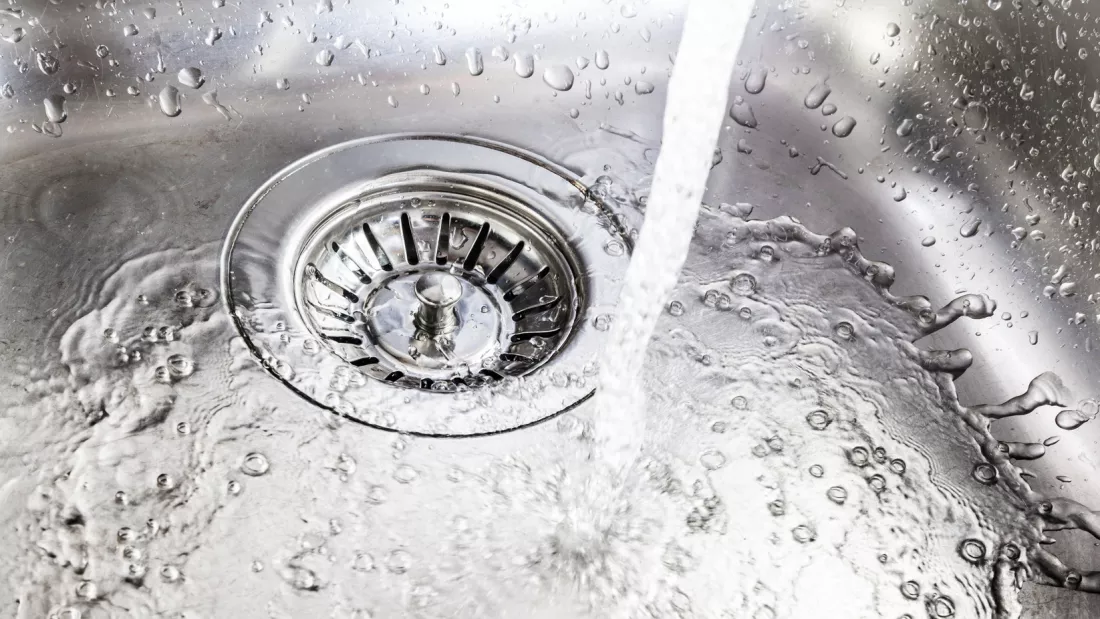Maintenance of your drain
Drainage system
With regular maintenance and care, you can make sure that the drains from sinks and the floor drains operate smoothly and do not cause problems for the rest of the drainage system. In case problems should develop with the sewer line, there is not much you can do yourself and you should contact professionals for assistance.
How to prevent clogged drains
- The kitchen sink is particularly exposed. Fat and bits of food quickly get stuck and can clog the water seal and the drain.
- I the bathroom, the sink and the floor drain in the shower cabinet are exposed to a combination of soap and hair, which quickly can form a clogging mass. The combination may result in an obnoxious smell.
- The best you can do is to be mindful of what you pour out in the drains. In addition to the organic material (fat, food, etc.) that clogs the drain, sand, dirt, and other materials will wear down the pipes if poured into the drain.
- The kitchen sink is equipped with an effective strainer that stops as much food as possible from going into the drain.
- Do not throw pads, cotton wool, cat litter, or other waste into the toilet. Paint, oil, and chemicals may not be poured into the drains because it will both cause environmental damage and break down the pipes.
- An effective way to prevent clogged drains is to pour a kettle full of almost boiling water into the sink once a week.
Should I use a chemical drain cleaner?
No. In case using boiling water and other methods prove ineffective, contact Balder’s customer service.
How to clean your sinks
If you have problems with a sink, boiling water can in most cases solve the problem. Boiling water kills most bacteria and prevents the drain from clogging. As a rule, you should clean your sinks once a week or at least twice a month.
- Pour two kettles full of almost boiling water into the drain of the sink.
- Remove hair and filth from the drain.
- Clean the drain and far down as possible.
- Use a universal cleanser and a sponge or a brush. Clean the sink’s plug and grid.
- Empty the water seal if there are any signs of clogging. The water seal is placed under the sink where the pipe bends. It can be unscrewed without the use of tools. You can often unclog the drain by using the plunger, but if that does not work, it may be necessary to disassemble the water seal underneath the sink. It is not particularly difficult, but it can be a little messy, so wear rubber gloves and place a bucket under the sink to catch the water. The installations on the pipes and the water seal are made of plastic and are easy to disassemble without the use of tools. When reassembling the water seal, be careful and ensure that it is tight before rinsing with hot water. If the clogging is located further down the drain, use a long spring, a socalled cleaning hook. Press it down the pipe and twist it to remove plugs and coatings.
How to maintain the floor drain
This primarily applies to drains that are used frequently, e.g. in the bathroom where a washing machine is connected to the drain. Floor drains can cause obnoxious smells. The obnoxious smell comes from bacteria that feed off hair and scraps of soap that gets stuck in the drain or in the wires that lead to the drain. By cleaning your drains monthly, you minimize the risk of both obnoxious smells and clogging.
- Remove the grid on your sink. The grid is most likely attached with screws that must be unscrewed before you can access the drain.
- Pick up the drain cup. Clean it and wash it with water. Any hairs are removed and thrown into the trash can – not into the toilet.
- Clean the drain with water and soap and if necessary use a brush to scrub it. It is important that you clean as far down the drain as possible. You can remove the shower head from the hose and use that to wash the drain.
- Clean the water seal in the same way as the drain. The water seal is usually located a maximum of 50 cm below the floor and can be cleaned from the floor.
- Finish by pouring boiling water into the drain, before reinstalling the grid.
If you have tried unsuccessfully to clean the drain by yourself, you may need to contact Balder’s customer service. In case of an emergency outside regular phone hours, contact Balder Emergency.
